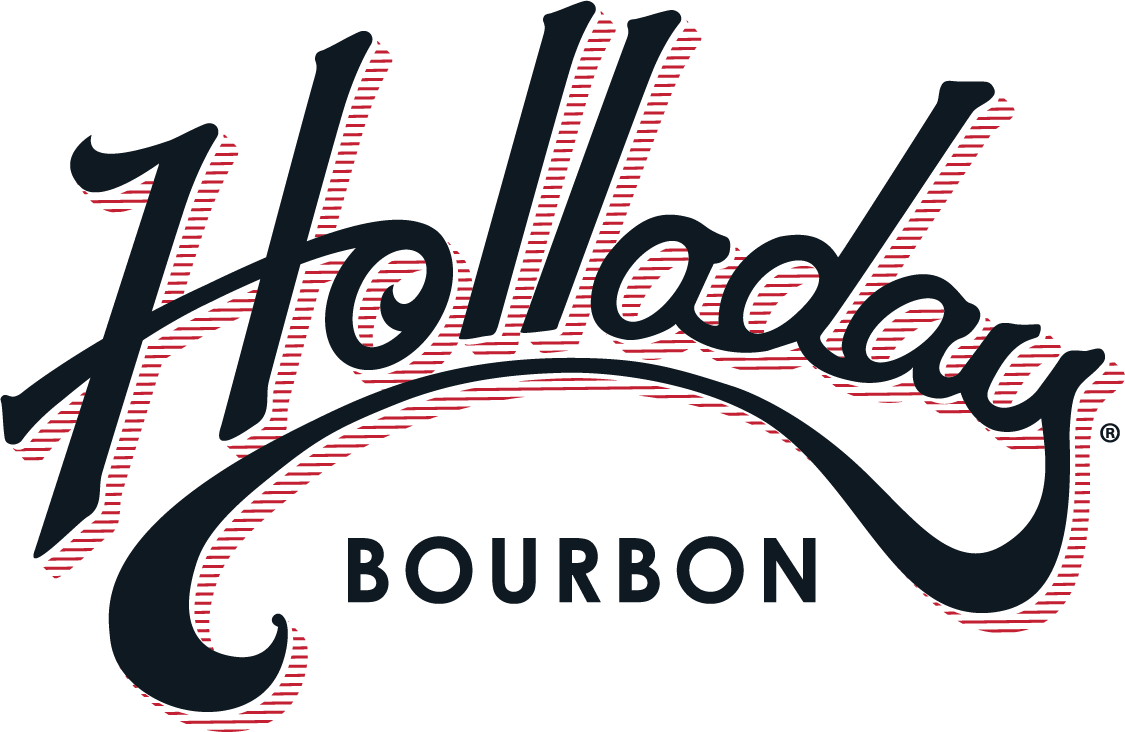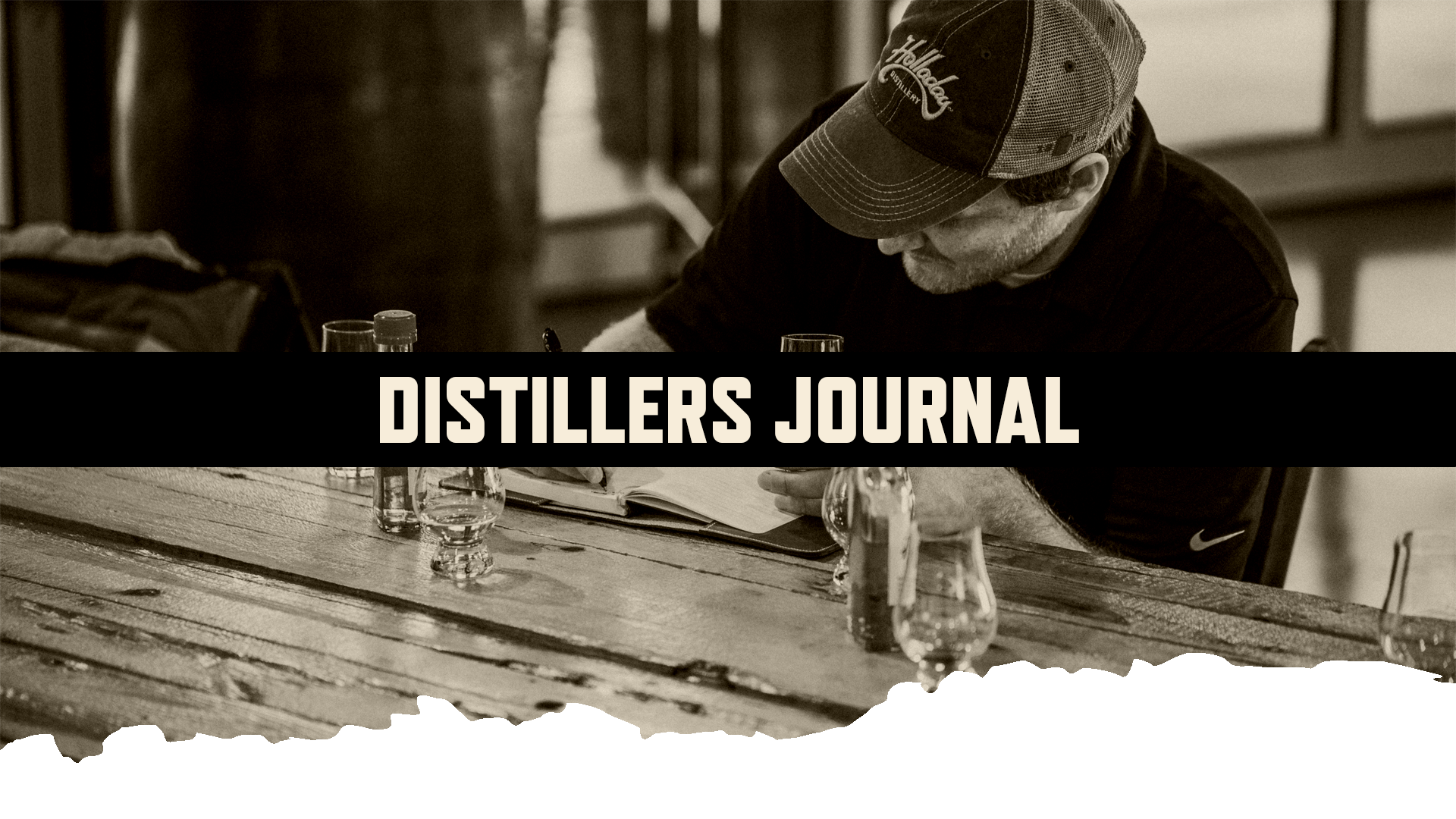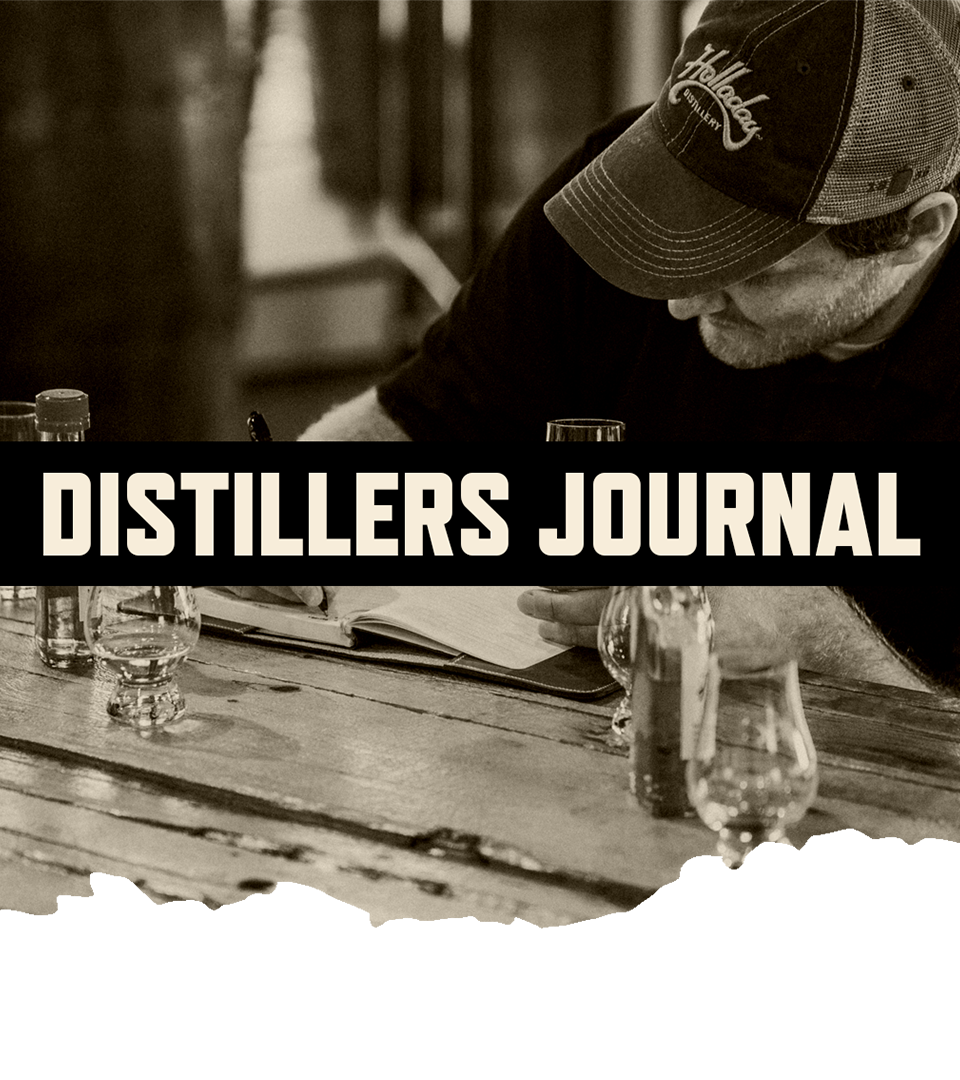

BARREL SELECTION (RICKHOUSE C)
Floor 7: 0%
Distilled: Fall 2016
BARREL SELECTION (RICKHOUSE C)
NUMBER OF BARRELS: –
Bottled: March 2023
Floor 7: 0%
Floor 6: 0%
Floor 5: 0%
Floor 4: 10%
Floor 3: 28%
Floor 2: 22%
Floor 1: 0%
Rickhouse Proof:
58.95 ALC./VOL. | 117.9 (PROOF)
Final Notes:
Since we started bottling Ben Holladay, we have always had the 5th floor as a part of the final product, and it almost has become a crutch of sorts. For this bottling, floor 5 was intentionally left out so that we could see what the batch can become with just floors 2-4.
As we’ve gone through the last year of Ben Holladay bottlings, we have tried a lot of different combinations and a lot of different average floors, and this fills in yet another piece as we try to fully understand how the bourbon ages in Rickhouse C.
Floor 3 took up the bulk of the mixture; 68% of the liquid came from these barrels. Floors 2 and 4 contributed 10% and 22% respectively. A total of 68 barrels were dumped to produce both the BiB and Rickhouse with a barrel loss of 30.2% during aging.
Distilled: Fall 2016
BARREL SELECTION (RICKHOUSE C)
NUMBER OF BARRELS: 90
Bottled: January 26 and 27, 2023
Floor 7: 0%
Floor 6: 0%
Floor 5: 11%
Floor 4: 40%
Floor 3: 31%
Floor 2: 18%
Floor 1: 0%
Rickhouse Proof:
59.6 ALC./VOL. | 119.2 (PROOF)
Final Notes:
We bottled the first batch of bourbon with four different floors to start the year. This month’s bottling consists of floors 2, 3, 4, and 5 with 18%, 31%, 40%, and 11% of each floor, respectively.
As our barrels keep aging we continue to use different variations of floors with each batch. Initially, we started off with only two floors in a single bottling – so this is a pretty big jump. Not only did we use the most floors in this round, we also introduced floor four to the mix. I hadn’t sampled this floor very often and since we haven’t mixed it with other barrels, I wasn’t sure how this would turn out. I only had a hunch that it would taste good because we all enjoy floors three and five so much.
I’ll be honest, this is a good one. I was pleasantly surprised with the flavor and the finish continues to linger longer than any of our previous releases. It only got better when we decided to accompany our traditional Ben with our Rickhouse version, coming in at 119.2 proof.
The first Rickhouse bottling of the year is a fun one. Just like our Ben Holladay Bottled-in-Bond Bourbon, Rickhouse Proof has four floors in this batch. It’s the first time that we have added a fourth floor and it’s been great spreading out across the floors and mixing different flavors from our 2016 distillate.
I was very impressed with this batch once it was in the bottle. It has a lot of really good flavor going on. By now we are familiar with the yields coming out of floors 2, 3, and 5 and are enjoying the results. This fourth floor – floor 4, there’s lots of 4’s going on here – just adds that lingering finish that we haven’t really experienced in the past. It really sticks with you and I love that.
Finishing at 119.2 proof, this is the highest full proof batch we have done so far. While it doesn’t seem like a full proof should make that much of a difference, there is a notable jump in flavor between Rickhouse Proof and our Ben Holladay Bottled-in-Bond Bourbon.
I’ll be honest, this is a good one. I was pleasantly surprised with the flavor and the finish continues to linger longer than any of our previous releases. It only got better when we decided to accompany our traditional Ben with our Rickhouse version, coming in at 119.2 proof.
Distilled: Fall 2016
BARREL SELECTION (RICKHOUSE C)
NUMBER OF BARRELS: 55
Bottled: November 14, 2022
Floor 7: 0%
Floor 6: 0%
Floor 5: 14%
Floor 4: 0%
Floor 3: 24%
Floor 2: 62%
Floor 1: 0%
Rickhouse Proof:
58.25 ALC./VOL. | 116.5 (PROOF)
Final Notes:
Last month we attended the Masters of Bourbon at Big Cedar Lodge and had the opportunity to share a blending experience that ultimately led to the barrel choices for the November bottling. It was the first time we have included anyone from the general public in our decision-making process and it was an experience I won’t forget. We made up a few different options together during the class and I also offered some of my own pre-bottled blends.
Each participant was set up with vials from different barrels to sample from. There were ten options that could be voted on and were categorized by the ricks of the rickhouse. For example, one could be floor 2, rick 7, tier 2. We went through and sampled bourbon from those vials as we normally would, then blended the top votes together and found just the right ratio.
We ended up going with a blend that was heavy on the second floor, which was actually a premade blend I brought to the table. This bottling came out to be 62% second floor, 24% third floor, and 14% fifth floor.
After everything was said and done, we had the crazy thought to bottle this at full-proof and the participants were all for it. I enjoyed the November batch at full-proof so much that I knew I didn’t want it to be a one-time offering. This whole process came together rather quickly but it just made sense. Everything fell together perfectly and I think it was meant to happen at this time.
We plan to offer a limited release of Rickhouse Proof each month that we bottle Ben Holladay Bourbon. For now, Rickhouse Proof can be found exclusively at the Holladay Distillery and is very special to us.
If you read through my notes on the November bottling, you may recall we had a crazy idea to bottle part of that batch at full-proof. We set aside a small amount of the blend that was chosen for Ben Holladay Bourbon that month to be bottled at its original proof – 116.4. Ben Holladay Bourbon is traditionally bottled at 100 proof which is one of the requirements to be classified as a bottled-in-bond product. Ben Holladay Rickhouse Proof Bourbon is Ben Holladay Bourbon in its original form, straight out of the barrel.
When I pull samples of bourbon, I am always tasting at full-proof. It’s special to be able to share this batch in its original state just as I would taste in the rickhouse. A higher-proof bourbon can sometimes steer people away from trying it because of the increased alcohol content. In this case, even with a higher proof, the flavor of the bourbon is more robust and complex than what you would taste at a lower proof. If you’re curious, I highly recommend sampling Ben Holladay Bottled-in-Bond and Rickhouse Proof side by side to experience the comparison firsthand.
We sold out of this batch onsite at the distillery within hours, but plan to offer a limited release of Rickhouse Proof each month that we bottle Ben Holladay Bourbon. For now, Rickhouse Proof can be found exclusively at the Holladay Distillery and is very special to us.
Distilled: Fall 2016
BARREL SELECTION (RICKHOUSE C)
NUMBER OF BARRELS: 55
Bottled: October 20, 2022
Floor 1: 0%
Floor 2: 27%
Floor 3: 55%
Floor 4: 0%
Floor 5: 18%
Floor 6: 0%
Floor 7: 0%
Final Notes:
This month is the first time we’ve gotten to use a full blend from the 2016 fall distillation season. Before, all of the other bottlings came from the spring of 2016. This batch is interesting because it includes barrels from a couple of floors we haven’t pulled from before. The barrels were pulled from floors two, three, and five. In previous releases, we were restricted to floors one and five with barrels of age in the same distillation season.
I was aiming for more complexity in this one. The characteristics in this batch are more diverse and became more obvious as I played with different ratios. I landed on 27% from the second floor, 55% from the third, and 18% from the fifth.
One specific component I dialed in on was the finish. At first, I thought it was a relatively short finish, but the more I tasted it and played with it, the more I realized the final blend did offer the long finish I look for.
This bottling is really special to me because I have a personal connection to the third floor. Every year around Father’s Day, I go up to the third floor (specifically rick 6 tier 3) because there is a barrel from the exact date my son was born. I have sampled this floor quite a bit and knew the bourbon was aging nicely. I’ll be saving that barrel for something special down the line.
Distilled: Spring 2016
BARREL SELECTION (RICKHOUSE C)
NUMBER OF BARRELS: 55
Bottled: September 13, 2022
Floor 1: 72%
Floor 2: 0%
Floor 3: 0%
Floor 4: 0%
Floor 5: 28%
Floor 6: 0%
Floor 7: 0%
Final Notes:
This month we had several barrels of age from the fall 2016 distillation season, but we didn’t have enough ready to create a full blend from that season. We blended this batch from barrels distilled and filled in spring 2016. These barrels are still coming from the 1st and 5th floors of C Rickhouse.
This month I came up with a bunch of options, but I decided to ultimately flip the ratios from the first batch and chose 72% of the barrels from the 1st floor and 28% from the 5th floor. We went heavy on the first to let everyone see the differences on how the taste profile shifts depending on where these barrels have aged in the rickhouse.
The 1st floor has always been the floor we were slightly concerned about, but now that we are tasting the bourbon of age that is coming out of those barrels, our concerns aren’t as high.
In the end, I had three different variations to choose from when narrowing down the final blend, and this one really stuck out to me as the clear winner. The subtle differences you can taste in this one is a progression of how it has shifted from a barrel influence to a spirit influence. The top portion of a rickhouse is hotter and will extract more from the barrel, as well as concentrate that additional flavor down via the angel’s share loss. By using more of those first floor barrels we created a flavor profile that is focused more on the spirit instead of the barrel characteristics. This is part of why we are doing blends the way we are, to keep the taste consistently authentic, but interesting.
I have included a geeky chart below to show the breakdown for anyone who is interested in seeing the number comparisons. The numbers we talk about and list on the label are based on the percent of barrels per floor. However, we weigh each barrel before we dump it to know our yields per floor as well. If you compare the two floors we have used so far, the fifth floor loses more weight over time than the first floor. That is another item we are tracking internally and are interested to see how this compares across all 7 floors of the rickhouse.
Ultimately, the taste drives the amount of barrels we pull. Moving forward, we will have a lot more barrels of age to choose from on different floors. These blends have been fun to work with so far, and I look forward to working with the barrels from the fall 2016 season very soon.
% by barrel |
% by weight |
|||
1st floor |
5th floor |
1st floor |
5th floor |
|
May-22 |
21% |
79% |
23.59% |
76.41% |
Jul-22 |
44% |
56% |
44.79% |
55.21% |
Sep-22 |
72% |
28% |
72.57% |
27.43% |
Distilled: Spring 2016
BARREL SELECTION (RICKHOUSE C)
NUMBER OF BARRELS: 55
Bottled: July 15, 2022
Floor 1: 44%
Floor 2: 0%
Floor 3: 0%
Floor 4: 0%
Floor 5: 56%
Floor 6: 0%
Floor 7: 0%
Final Notes:
Immediately following the initial release of Ben Holladay Bourbon, my mind shifted to this next batch. I began pulling samples right away knowing I would have a wider selection of barrels to narrow down for batch two. This batch shares traditional bourbon characteristics with the first release, but you’ll find subtle differences that result in noticeable flavor variations.
Having more barrels of age to choose from made my pulls easier and more difficult at the same time. I liked having more options to work with, but the wider selection made it challenging to narrow down with so many desirable barrels on hand. I settled on 44% from the first floor and 56% from the fifth floor.
Overall we had a loss of 31.1% which was close to what we expected. Barrels aged on lower floors of ironclad rickhouses result in higher yields compared to those on the upper ricks. When dumped, the proof of lower level barrels is also slightly lower in comparison.
Initially, I was hesitant to contribute a larger percentage from the first floor due to concerns that the bourbon would have less character, but not in this case. The barrels have added delicate aromas and sweetness to this batch. The oak influence from the fifth-floor barrels is still very much present, but the ratio resulted in a well-balanced batch.
Once I became confident in my barrel choices, we weighed each one, dumped and combined them into what I felt was the perfect combination for Ben Holladay Bourbon batch two. The empty barrels were passed along to a few local breweries to repurpose for a barrel-aged beer. I look forward to sampling those brews once released.
After taking in all the feedback from the initial batch, I’m anxious to see how this flavor profile is received. I’m just as proud and confident in this release as I was of the first one. I believe it’s only going to get better from here as the legacy of DSP-MO-5 continues.
Distilled: Spring 2016
BARREL SELECTION (RICKHOUSE C)
NUMBER OF BARRELS: 56
Bottled: May 20, 2022
Floor 1: 21%
Floor 2: 0%
Floor 3: 0%
Floor 4: 0%
Floor 5: 79%
Floor 6: 0%
Floor 7: 0%
Final Notes:
While there were a limited number of barrels to choose from with this batch, I played around with potential blends for the last six months obsessing about every possible combination. This batch was aged in Rickhouse C, the largest rickhouse on site. I decided to focus this batch heavily on the fifth floor to provide a strong backbone of barrel-derived flavor. To round out the blend, the remaining 21% of the batch used barrels that came from the first floor. Those barrels had a subtle sweetness to them which helped balance the dryness from the barrels aged on that warmer fifth floor.
As I was building out and blending this batch, there were a couple of barrels from our fifth floor that were destined to be dumped that I just couldn’t let go. There was nothing wrong with those barrels – they tasted really good. So good in fact, that it made us dream of a potential single barrel offering. Only time will tell if that dream becomes reality, but until we know that answer I plan to keep them sitting tight in our rickhouse.
Overall, we had a loss of 32.7%, which was higher than projected.
Once the bourbon was dumped, we sent it through some simple filtration to remove all barrel char from the bourbon. Bottled-in-bond spirits by law have to be bottled at 100 proof. Because chill floc generally does not appear in the bottle at that high proof point we chose not to chill filter our Ben Holladay bourbon.
Finally, I’m very pleased with how this batch turned out and very proud of our team for getting to this point. Countless people have put in early mornings or late nights, and I am thankful to everyone who contributed to this project. In order to get to this day, we had to rebuild and relearn our heritage of distilling and aging bourbon at our historic facility. I think I speak on behalf of everyone on our team when I say that it is both exciting and humbling to be writing the next chapter in the legacy of DSP-MO-5.
Notes:
During a blending class with Nancy Fraley, I learned about the concept of slow water reduction (aka slow cut) where an aged spirit is slowly brought down to bottling proof by addition of water over weeks or months, rather than all at once. The theory is this helps prevent saponification, which ultimately results in a more round mouthfeel.
It was further discussed that it is possible to do this in the barrel itself, which further changes the taste of the bourbon. At higher barrel entry proofs, the ethanol soluble flavor compounds (i.e. aromatic aldehydes like vanillin) are extracted from the oak resulting in your typical bourbon taste profile. Lower barrel entry proof bourbons result in a sweeter, full bodied taste profile by extracting wood sugars that were created when the barrel was charred.
The experiment was fairly straightforward -on August 16, 2019 I added 18 liters of water to a barrel that had aged in the rickhouse for at least two years at our standard 118 barrel entry proof. From there, we let it rest right next to a control barrel for 4 more years. This slow cut barrel was dumped and directly bottled at barrel proof, while we cut the control proof down to the exact same proof for comparison.





